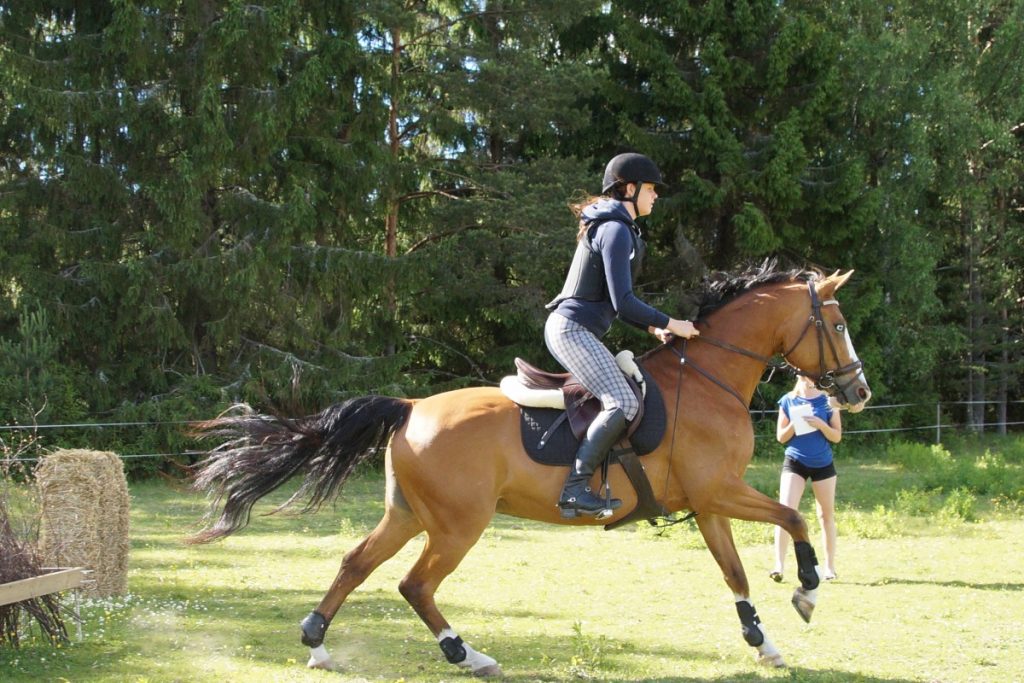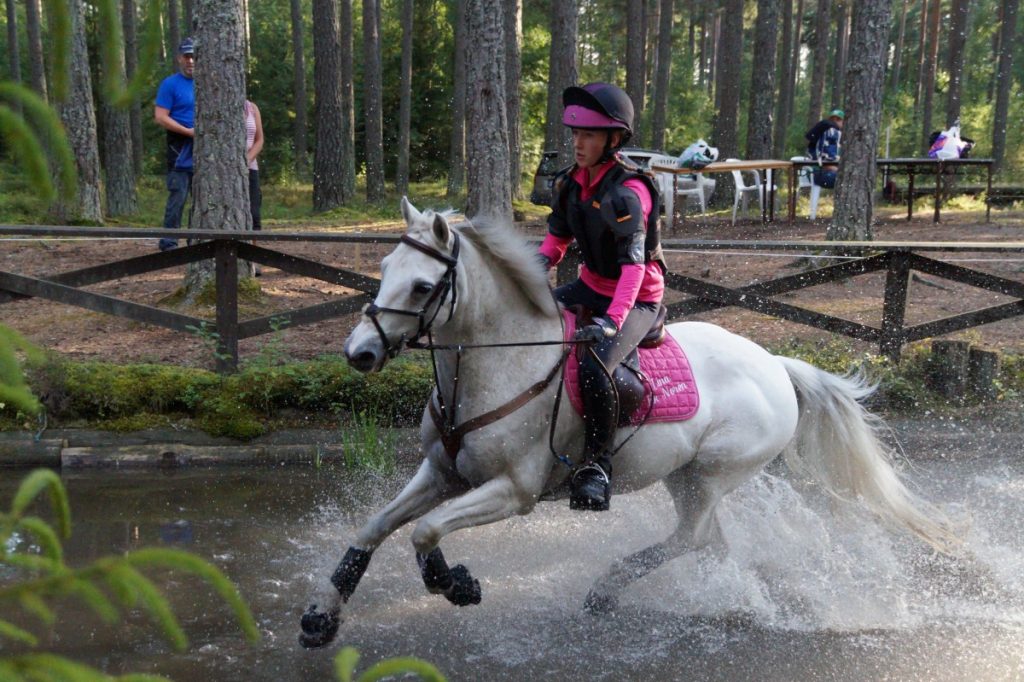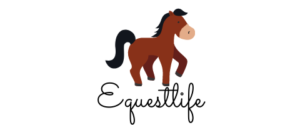When it comes to our horses, we all want the best for them. We want them to be healthy, happy, and responsive to us. We also want them to be comfortable, pain-free, and willing to develop a trusting and deep connection with us.
Unfortunately, your horse cannot be completely comfortable, pain-free, happy, or trusting, with a bit in their mouth. This is because the horse’s mouth is incredibly sensitive, and they will experience mild to severe pain when ridden with a bridle.
Why? Bridles are designed to apply pressure (and sometimes pain) within the horse’s mouth, thus giving you control. A bit that is too severe in the wrong hands is going to cause some major pain, and a bit that is extremely soft, is still going to cause rubbing, soreness, and cuts.
So, does a bridle hurt a horse? Yes, both bits and bitless bridles can hurt horses. The pain they can cause the horse varies greatly and should be noticeable by the owner. In general, the pain caused by the pressure of the bridle is not considered cruel.

Why Do We Use Bits on Horses?
The term “bridle” comes from the Old English term brīdel, meaning to restrain, curb, or rein.
The entire purpose of a bridle is to help restrain a horse’s movements when needed, including stopping a horse, turning a horse, and getting a horse to move forward. A bridle can either have a bit or be bitless, with the purpose of a bit being assist a rider with communicating commands to the animal.
The bit is held onto the horse’s head with a bridle, and has reins attached to it that are held and used by the rider. It is important to note here that the bit does not actually control the horse, the training and the horse’s obedience to you is what gets them to respond when commands are given via the reins.
Can You Ride a Horse Without a Bit?
Yes, it is very possible to ride a horse without a bit. There are bitless bridles available and some riders have even made the switch to riding with just a halter.
Whether you have a horse that is just starting training or an older horse that has been ridden with a bit for most of its life, you can make the switch, as bitless riding primarily relies on the horse’s trust with you and your horsemanship skills.
Early Training for Bitless Riding.
If your horse is new to training, it is possible to ride it without any headstall at all. The only limitation to teaching your horse how to ride without a bit, is you will be limited in which equestrian activities you partake in.
If your horse is training to be in the show ring or is competing in dressage competitions, you will need a bit. In places where there are no rules surrounding the use of bits, like in small shows, when you are at home, or on the trails, you can go without one.
Many trail riders go without a bit as it allows the horse to eat and drink freely and helps them be more comfortable.
Riding with a Bit & Making the Switch
If you are already riding your horse with a bit and want to make the change, test out the bitless bridle in the show ring or arena at home.
See how your horse responds to you and make sure that they are obedient to your aids. Most horses who have already had training for years will make the transition smoothly as they will be more comfortable and more relaxed.
However, if your horse does not respond well to the bitless bridle, they may need some re-schooling first.
Please note that even bitless bridles can cause your horse a great deal of pain if used improperly. They are not necessarily kinder or more humane but do offer another option if you want to remove the bit completely. Examples of bitless bridles include side pulls, hackamores, and bosals.

What Are the Different Types of Horse Bits?
When looking for a bit for your horse, it is likely that you have come across a “bit wall” in your local tack shop.
Essentially, this is just a wall that has all kinds of bits on it with different mouth and material types. While it can be easy to become overwhelmed by the sheer number of mouthpieces, style, and material, there are only two basic types of bits, while the “other” types are either hybrid bits or double bridles.
- Snaffle Bits. The snaffle bit is the most common type of bit available. It does not utilize leverage or rotation, which means that when you apply pressure to the reins of a snaffle bit, the horse is going to feel the equivalent amount of pressure in their mouth. With snaffle bits, the reins are attached directly to the mouthpiece to get the “nutcracker” effect just described. Snaffle bits do not have shanks, exert less pressure in the mouth compared to other bit types, and are considered to be the gentlest type of bit due to their rubber mouthpiece.
- The Eggbutt Snaffle is the gentlest type of snaffle bit due to its egg-shaped connection, as this shape ensures that the bit does not pinch the corners of the mouth.
- Another style is the D-Ring Snaffle, where the ring of the bit is in the shape of a “D”.
- The Loose-Ring Snaffle is popular as the mouthpiece is attached to a full-round ring and can therefore, slide around. This allows the bit to lay in the most natural position, giving the horse a bit more comfort.
- The Full Cheek Snaffle utilizes cheek pieces so that the bit cannot be pulled around in the mouth.
- Curb Bits. Unlike a snaffle bit, a curb bit does use rotation and leverage as the reins will attach to a shank or cheekpiece. This allows the rider to provide more nuanced directions to the horse via the shanks, which act as levers that pull on the bridle crown. When the bridle crown is pulled on, this can place pressure on the top of the horse’s head, as well as, pull on the strap that is against the horse’s chin. The longer the shank is, the greater the leverage that there is. There are two types of curb bits, a Western and English, which are described below.
- A basic Western Curb Bit will have gentle ports, curving upward at the center of the mouthpiece. When the rider takes the reins, leverage is exerted onto the horse’s mouth and onto the poll, which is where the bridle goes over the head and behind the ears. A Western Curb Bit is used in combination with loose reins and longer shanks, so that the rider can give light rein aids. This gives the same result as using a snaffle bit with a firmer contact point.
- An English Curb Bit has shorter shanks than Western Curb Bits, ranging anywhere from four to five inches, whereas the Western bit is anywhere between eight or nine inches. A common type of English Curb Bit is the Weymouth, which has a low port, short straight shanks. Another is the Liverpool bit, which has numerous rein-attachment slots, giving the rider a choice of leverage power and severity.
- Another English Curb Bit that comes up a lot is the double bridle. With this, two bits are used together, those being the Weymouth and the Bridoon. They are used together to refine the aids given by the rider in top-tier dressage competitions.
What Is the Best Bit for a Horse?
Ideally, you want to use the bit that is the mildest, while still being able to communicate with your horse.
The softest bit available is a snaffle bit that is made out of rubber as this will smoothly fit the bars of the horse’s mouth, and the rings of the bit will fit the corners of the mouth without pinching them.
